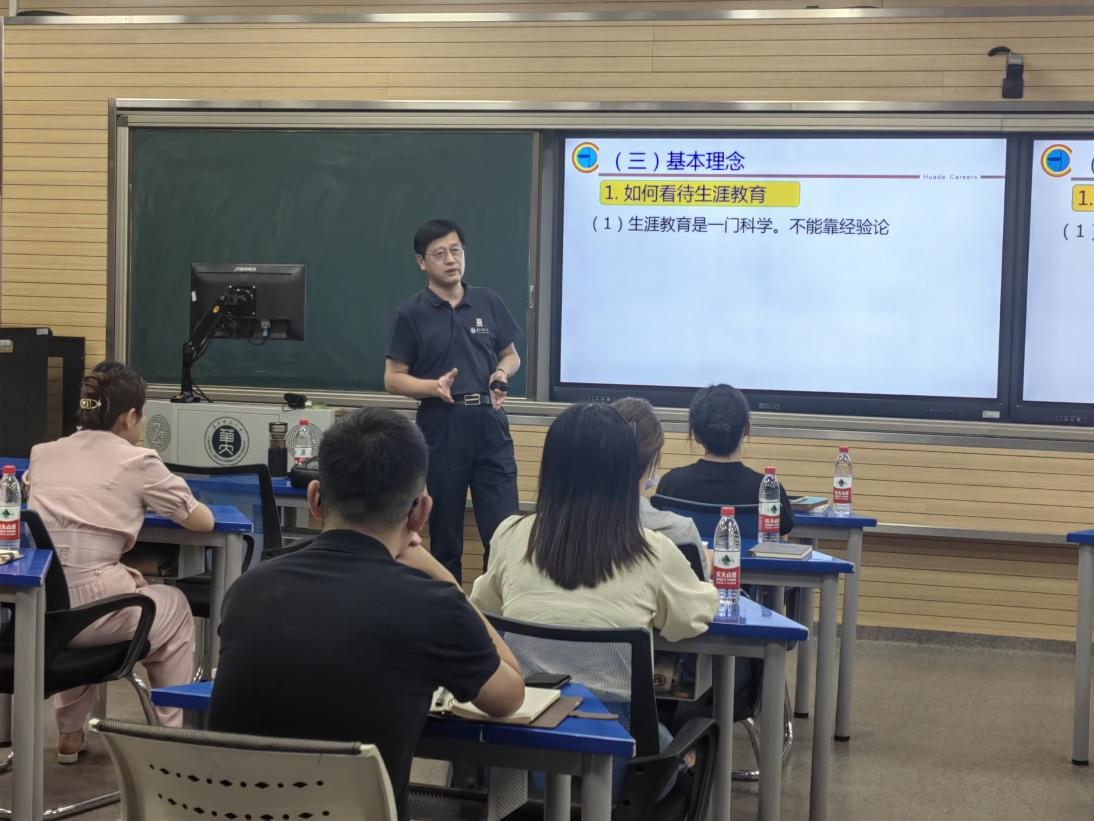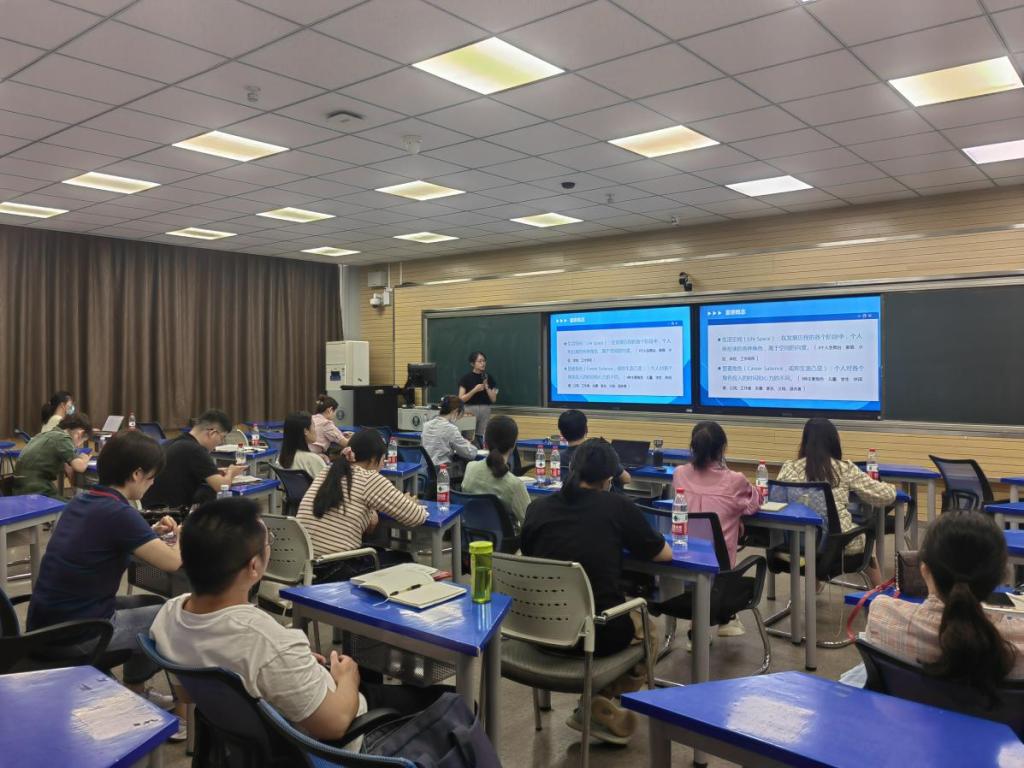To solidify the construction of teachers and career counselors of career education general courses in our university and improve their theoretical and career counseling skills, the Center for Career Education and Studying Development held the first training session for teachers in this academic year on September 1st. More than 20 teachers and counselors from different colleges attended the training. This semester's career education teachers' training contains 4 phases. This session focuses on theory learning, taught by Lang Dongpeng, Pan Yingzi, and Guo Jingxiao. The training was hosted by Lang Dongpeng, deputy director of the Student Work Department of the Party Committee.
First of all, Lang Dongpeng started from the origin of career theory and introduced the key points—conception, influence, and system. After setting up the appropriate attitudes towards career education, Lang Dongpeng pointed out four concepts of career education—lifelong development, living in the present while holding hope for the future, individual differences, and self-cultivation. When he talked about the critical points of career education, he stated that the meaning of career education is to guide students to combine their personal development with social progress, which is mutual help. Finally, Lang Dongpeng deconstructed the system of career education into different dimensions: goals, orientation, targets, and methods.

Then, Pan Yingzi introduced Schober's career development theory from four aspects, including theoretical background, important concepts, practical application, and theoretical evaluation. In the background of the theory, Pan Yingzi emphasized the important contributions of Schober in the field of career counseling and explained the 14 assumptions of Schober's career development theory with her understanding and experience in exhaustive detail. In addition, she also deciphered the important concepts involved in Schober's career development theory, such as self-concept, career maturity, career breadth, life space, and significant roles. To better apply this theory in career guidance, Pan Yingzi gave the teachers three methods well worth trying: lifeline, career rainbow chart, and role pie chart.

Finally, Guo Jing prim introduced Parsons' trait factor theory and Hollander's personality type theory. After introducing the meaning of traits and factors, Jingxiao Guo emphasized that the core of the theory is person-job matching. i.e. individuals need to put themselves in the right position and make appropriate choices, based on a thorough understanding of their own characteristics and career requirements. In the introduction of Hollander's personality type theory, Guo analyzed each of the six types of Hollander's personality, and finally shared with the teachers present the importance of teaching students the importance of making career planning with their own characteristics by fully combining live cases.

This training of rich career education theories improved teachers' theoretical knowledge and stimulated new teachers' enthusiasm for this journey, which is of great significance for teaching courses to students and carrying out career counseling services later.
Source: Office of student affairs of Central China Normal University
Translator: Yang Siyu
Date: September 13, 2022

